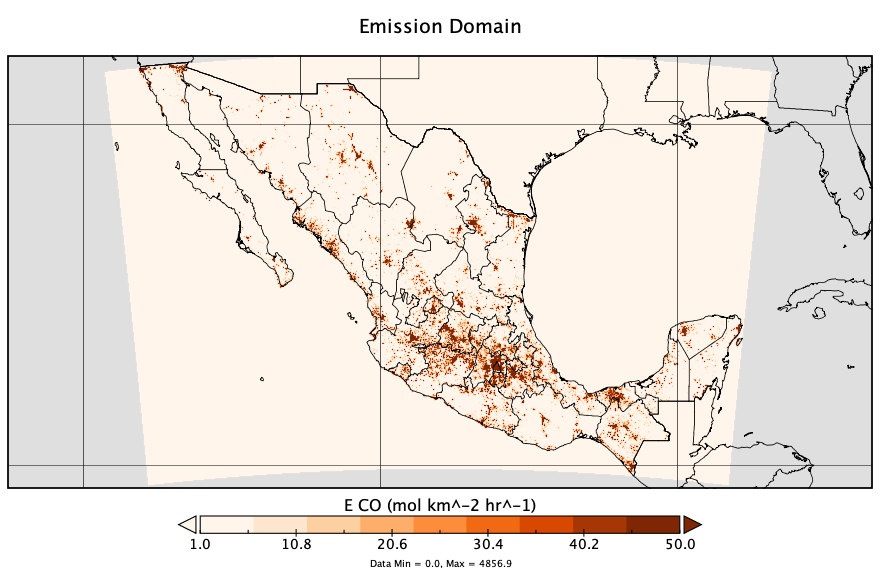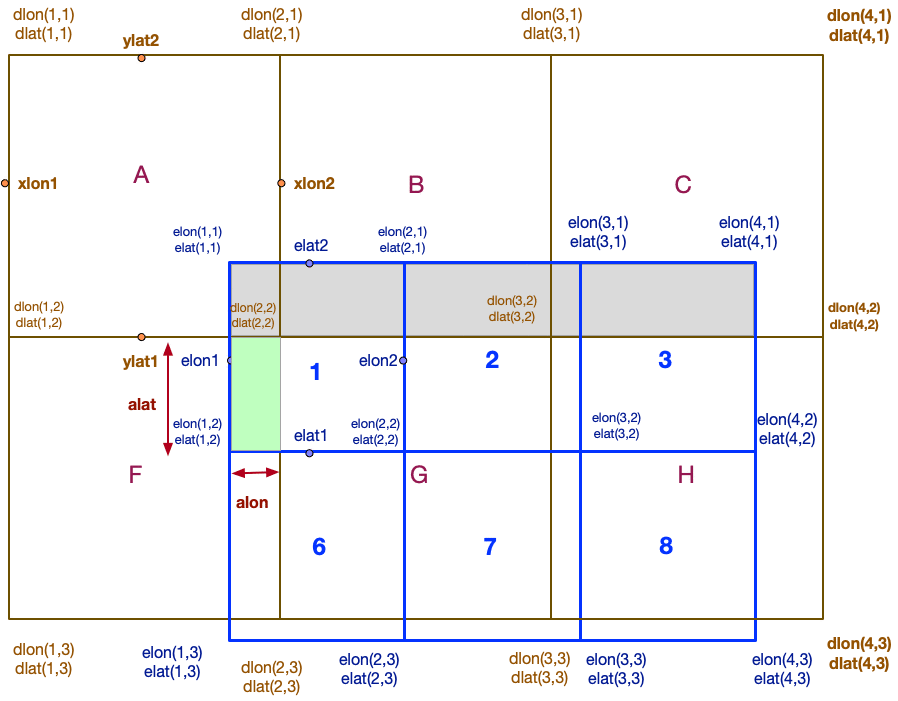Emission Interpolation to a new mesh by using a conservative flux method
The new mesh is provided by the wrfinput file and the original grid with emissions are provided from wrfchem file
input files:
wrfchemin.nc ! A 12 hours emission file to be interpolated (0 to 11 hour or 12 to 23 hour)
wrfinput ! Domain where emissions will be interpolated
output file:
wrfchemi_00z_d01 or wrfchemi_12z_d01 ! 00z or 12z based on emissions file.
! d01, d02,... based on wrfinput
wrfchemin.nc - file contain emissions starting with "E_"
Emissions Inventories are generatred for represent global, regional or local emissions, air quality models domains are displayed in a different grid (dimensions and location) than the emissions. On other hand, emissions are a flux and it is necesary to use a mass conservative interpolation in order to avoid inconsistencies in the emissions. An example of overlaping grids is presented in the followgin figure.
Grid with letters represents the new domain (it has coordinates dlat,dlon) and grid with numbers is the emissions (it has coordinates elat,elon). For N emission there are N+1 coordinates in each axis. The following figure presents the locations of the coordinates in each mesh.
For the new domain to interpolate the emissions the following variables are set:
| New domain | Emissions domain |
|---|---|
ylat1=.5*(dlat(i,j-1)+dlat(i,j)) |
elat1= 0.5*(elat(ii,jj)+elat(ii,jj-1)) |
ylat2=.5*(dlat(i,j+1)+dlat(i,j)) |
elat2= 0.5*(elat(ii,jj)+elat(ii,jj+1)) |
xlon1=.5*(dlon(i-1,j)+dlon(i,j)) |
elon1= 0.5*(elon(ii,jj)+elon(ii-1,jj)) |
xlon2=.5*(dlon(i+1,j)+dlon(i,j)) |
elon2= 0.5*(elon(ii,jj)+elon(ii+1,jj)) |
the following figure presents the locations of the coordinates in each mesh.
The following procedure is followed for obtainig the new emissions in the new grid:
alat=(min(ylat2,elat2)-max(ylat1,elat1))
alon=(min(xlon2,elon2)-max(xlon1,elon1))
area=max(0.,alat*alon)
Emissions in cell A are a flux emission fraction from 1, for B a flux fractions from 1 and 2, and for C fluxes from 2 and 3, F fluxes from 1 and 6, G from 1, 2, 6 and 7 and H from 2, 3, 4, 7, 8 and 9, and so on.






